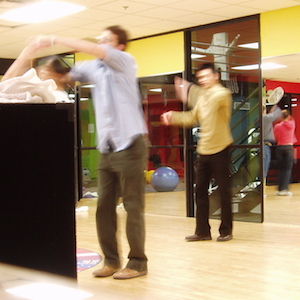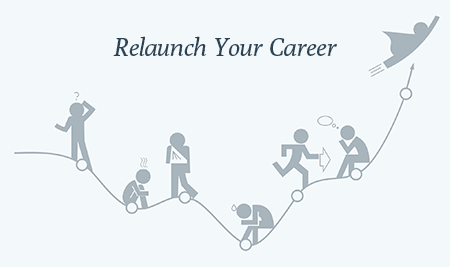So you’ve made the decision to leave your job behind with the hopes of doing work that matters more to you. Now what?
Whenever I’ve closed down a chapter in my career, I’ve always felt a mix of emotions. It normally starts with a sense of relief followed by sense of excitement about the future. But after these emotions wear off—as they often do—I’ve been left with the sense of confusion and fear about what’s next for me.
With so many directions you could take your career, where do you even begin?
On the one hand, options are exciting. On the other hand, too many options can leave you feeling paralyzed about where to begin.
To help you figure things out, I’ve captured four of the most effective ways I’ve seen people reinvent themselves. For each, I’ve also outlined the tradeoffs involved and a few of the challenges I’ve faced when I’ve been on each of these paths myself. Sometimes, just knowing how others approach a career change can help you decide how to proceed during your own career journey.
THE EXPLORER

An “Explorer” has a variety of interests, but doesn’t necessary know which could translate into a viable new career. An Explorer focuses on testing out a wide range of options and may go on a personal renaissance of sorts. This exploration could take the form of tinkering with a side gig. Or rekindling a former childhood passion. Or volunteering for an organization related to one of your interests. Or giving yourself some time and space to make a clean break from the former career and gain a fresh perspective, something I’ve talked about in the “Reflection” stage of the 7 Stages of Career Change.
The great thing about being an Explorer is open-mindedness. This sort of openness allows you to stumble across ideas that may have never crossed your mind before. On the other hand, there’s an underlying stress of trying to quickly pick one path to pursue, especially if you feel you’re “falling behind” those your peer group.

Me teaching salsa dance classes in Washington, DC
To give you an example of when I’ve run into this challenge myself, after I resigned from medical school, I didn’t really have a clear sense of what I wanted to do next. So I began tinkering with several ideas simultaneously. I initially took a part-time job as a research assistant at the National Institute of Mental Health. I later became a health policy analyst at a consulting firm in Washington DC. I spent my evenings and weekends pursuing a few side interests. I became a part-time salsa dance instructor at a local Cuban Club, and I got my Emergency Medical Technician (EMT) certification. I enjoyed dabbling in a lot of different things.
However, as time went on, I felt increasingly uneasy about not having the clarity I needed to take the next step in my career. I felt like everyone else around me had a career direction, and I was still aimlessly fumbling around.
While all this exploration at times felt very random in a bit all over the place, this room I gave myself to tinker in low-risk ways, ultimately helped me clarify which activities resonated with me and which ones didn’t.
THE STUDENT

A “Student” make the effort to invest in building new knowledge, skills, or training. This might mean taking an online course or evening course. Gaining a useful certification. Attending an educational seminar. Or making a larger investment like going back to school to obtain a degree that can build a bridge toward a future career.
The main advantage of being a life-long learner is really the opportunity to develop a new set of skills. The main challenge centers around clarifying whether the investment of time, money, and energy is worth the payoff.
For example, after working for a while at the health policy consulting firm, I wanted to get more involved with branding and marketing businesses, something I had only dabbled in at the firm. The problem was, at the time, I felt like I lacked some of the formalized business skills and training to be fully effective in my role.

Me as a very serious MBA student at Michigan with lots of hair!
I thought about doing an MBA, but I was nervous about the investment. I was concerned about giving up a comfortable salary and returning to student lifestyle, building up debt instead of equity. I also didn’t have a ton of business experience under my belt, so deep down, I wondered if I could cut it at a top business school. In the end, I decided to go back to school and get my MBA because I knew it would serve as the bridge between where I was and where I wanted to take my career.
Going back to school or investing in training is a serious decision. It involves a lot of time, money, and energy. However, an investment in your skills and knowledge is something no one can take away from you.
THE RENOVATOR

The career “Renovator” is someone who makes a tweak to their situation, but doesn’t completely leave their former profession behind. I would describe their move as more of a pivot rather than a total relaunch. Every job out there as being composed of 5 components: geography, industry, company, function, and role. Sometimes, changing just one or more of those can be enough to move you from having a dissatisfying job to one you really love.
The biggest advantage of being a Renovator is that the transition tends to be smoother because it allows you to retain elements of your existing profession. However, the major challenge is ensuring the change is substantial enough to make a material difference to your day-to-day happiness.

My days as a Senior Brand Manager at General Mills UK
For example, I once held a job as a Senior Brand Manager at a desserts company in London. Although I really loved the role at first, over time, I realized the culture and direction of the company were misaligned to the type of person I wanted to become. So I made a shift. I transplanted myself from a small, UK-based start up to a larger, more established US-based company. I didn’t change everything. I was still in London. I was in a similar role. And I still worked in marketing.
In my case, this minor change was not ultimately enough to drive greater long-term satisfaction in my career. But sometimes, as Tony Robbins once said in one of my favorite talks, you may only be 1 millimeter away. Sometimes making a small tweak can be enough.
THE PIONEER

The “Pioneer” decides to pave a unique path forward, leaving behind the structure and predictability of a full-time job at a company or institution. This could mean starting a business, becoming a freelancer, or offering a useful service that taps into some sort of expertise.
The beauty of being a Pioneer is the independence, autonomy, and flexibility. The main issues are, well, the loneliness that comes from independence, the pressure that comes with autonomy, and maintaining discipline with so much flexibility.
Becoming a Pioneer is ultimately where I chose to take my career.

Me speaking about career change at The Shard, London
I love the meaningfulness of doing work that aligns with my values, the satisfaction of making the most of my strengths, and the control it gives me over how I spend my time. Since starting my own business three years ago, I can say from the bottom of my heart, I’ve never felt more gratified, satisfied, and self-actualized as I have since launching off on my own.
Running your own business hasn’t come without it’s challenges, but if you can get past those challenges of self-employment, the rewards can be absolutely tremendous.
WHAT’S THE RIGHT PATH FOR YOU?

While many of the clients and people I work with are Pioneers, each of the paths here can be fruitful toward relaunching your career. The choice really is yours. Nothing stops you from being a Pioneer who’s also exploring additional side gigs. Or a Renovator taking a weekend course.
Ultimately, you get to decide which path aligns with who you are. You get to decide what allows you to gain the most traction toward opening up this next chapter in your career. You get to control where you choose to invest your energies. You get to own and shape what happens next during this exciting time of change.
Hear More About the 4 Ways to Find a New Career Path
DECIDE WHAT’S MOST PRODUCTIVE FOR YOU
If you’re struggling to understand all the options out there, you can download my free “4 Ways to Relaunch Your Career” checklist that can help you clarify which path(s) might be right for you, and a few ideas of ways you can begin.




I am on this career changing journey and appreciate the guidance that you provide. I started a blog to chart my journey by interviewing people who are pivoting to their passion or next career. I never considered that there are categories of career changers. The hardest part for me is the steps that I need to take to get from where I am to where I would like to be.
Lynda, I’m glad you found this guidance useful. The categories of career changers arose from talking so LOTS of people about the steps they took to make changes in their careers. I’m sure there are more, but these are the big ones! I know what you mean about taking those steps to move forward. I’ve often found that starting is the hardest part, but if you can force yourself to just start. I always try not to let my desire for perfection stand in the way of me making small progress, but definitely easier said than done! I hope your blog goes well, and you learn a lot from those conversations you’re having. Sounds interesting!
Hi Joseph,
Excited about this new pdf since I found so much value from The 7 Stages of Career Change Roadmap. Some about the visuals, layout, and conciseness of it gave me the perspective and clarity I desperately needed to push myself to take action – which was to quit my job back then.
It’s been about 5 months since and 4 Paths Toward Relaunching Your Career is helping me see that I’ve been Exploring, Studying, and Renovating all this time. What’s also interesting to me is that now I’m starting to adopt mindset of Pioneering.
I hope to come up with a tiny/micro business – hopefully something that resonates deeply with me so that it is lasting and authentic. You might have something to help me discover what that might be. I’ll check around your site 🙂
Calikat, I’m so happy to hear you found this to be so useful to your career in addition to my 7 Stages of Career Change roadmap. Really excited to hear about how you’re thinking about branching off on your own to start your own venture, which can be an exhilarating and rewarding experience. In terms of what might help you decide what’s important to you, I’d recommend checking out this Career Relaunch episode featuring Aniefre Essien who talks about aligning your work to your values. You might also find these life purpose visualisations useful.
On a side note, I’d welcome you sharing where you’re at on your career change journey with the Career Relaunch listener community. So if you feel like sharing your situation or a question you have about career change, feel free to leave me a voicemail, and perhaps I’ll feature it on the show!